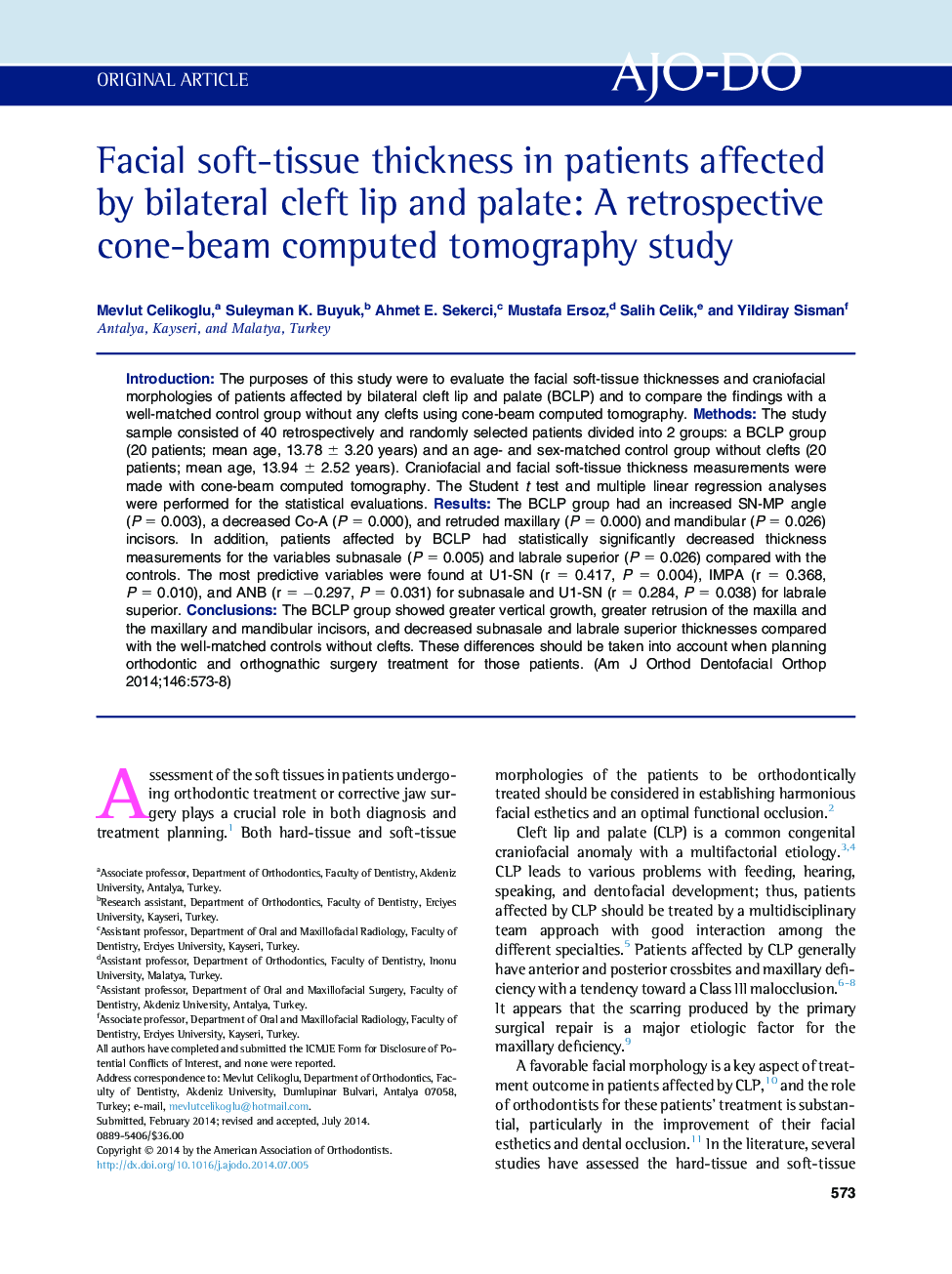| Article ID | Journal | Published Year | Pages | File Type |
|---|---|---|---|---|
| 3116238 | American Journal of Orthodontics and Dentofacial Orthopedics | 2014 | 6 Pages |
•The BCLP group had an increased SN-MP angle, a decreased Co-A, and retruded incisors.•No differences were found between the sexes for the soft-tissue thickness values.•The BCLP group had significantly decreased subnasale and labrale superior thicknesses.•The predictive variables were U1-SN, IMPA, and ANB for subnasale and labrale superior.
IntroductionThe purposes of this study were to evaluate the facial soft-tissue thicknesses and craniofacial morphologies of patients affected by bilateral cleft lip and palate (BCLP) and to compare the findings with a well-matched control group without any clefts using cone-beam computed tomography.MethodsThe study sample consisted of 40 retrospectively and randomly selected patients divided into 2 groups: a BCLP group (20 patients; mean age, 13.78 ± 3.20 years) and an age- and sex-matched control group without clefts (20 patients; mean age, 13.94 ± 2.52 years). Craniofacial and facial soft-tissue thickness measurements were made with cone-beam computed tomography. The Student t test and multiple linear regression analyses were performed for the statistical evaluations.ResultsThe BCLP group had an increased SN-MP angle (P = 0.003), a decreased Co-A (P = 0.000), and retruded maxillary (P = 0.000) and mandibular (P = 0.026) incisors. In addition, patients affected by BCLP had statistically significantly decreased thickness measurements for the variables subnasale (P = 0.005) and labrale superior (P = 0.026) compared with the controls. The most predictive variables were found at U1-SN (r = 0.417, P = 0.004), IMPA (r = 0.368, P = 0.010), and ANB (r = −0.297, P = 0.031) for subnasale and U1-SN (r = 0.284, P = 0.038) for labrale superior.ConclusionsThe BCLP group showed greater vertical growth, greater retrusion of the maxilla and the maxillary and mandibular incisors, and decreased subnasale and labrale superior thicknesses compared with the well-matched controls without clefts. These differences should be taken into account when planning orthodontic and orthognathic surgery treatment for those patients.
